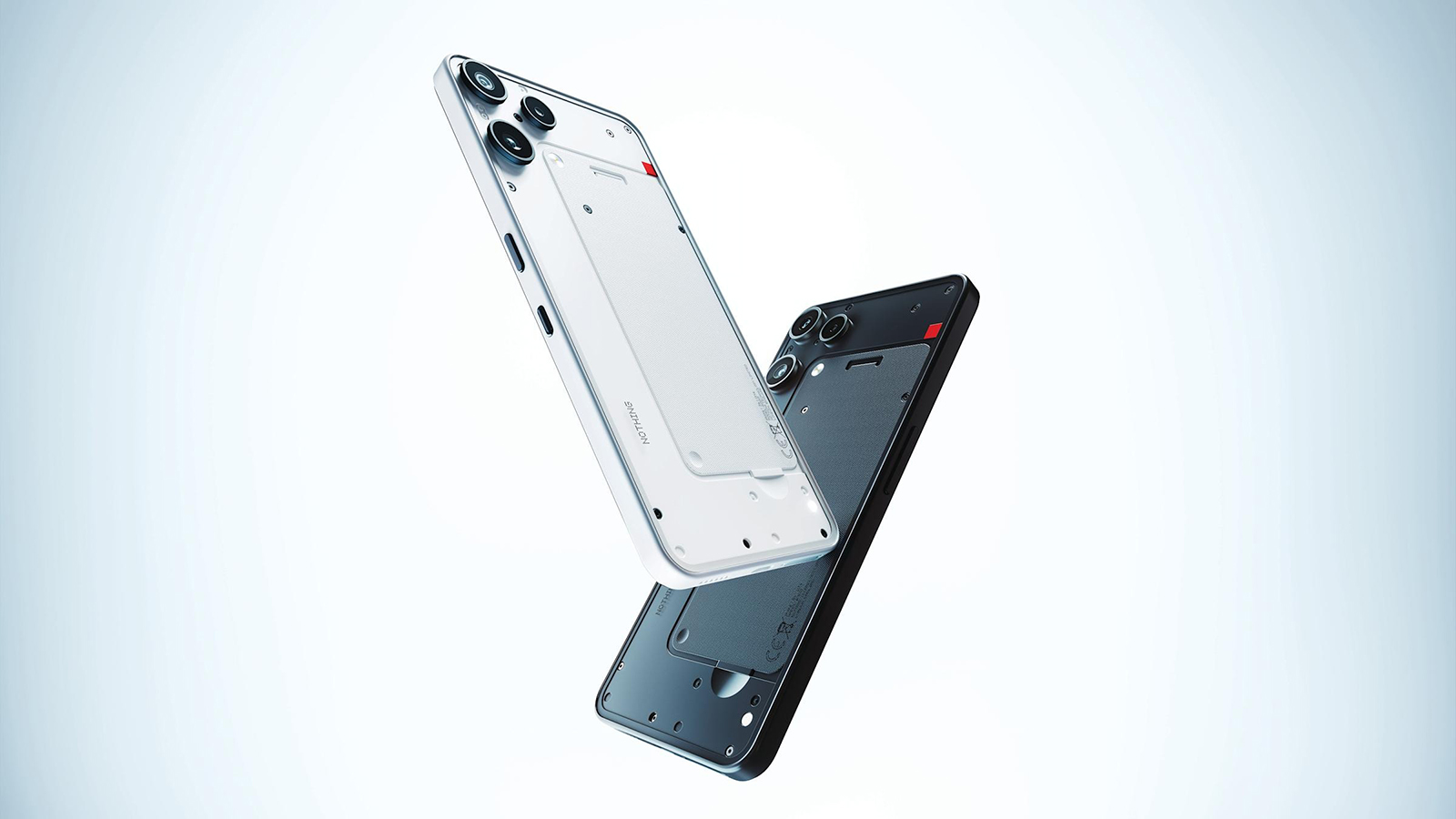Best Garmin watch 2025
These are the best Garmin watches across the Venu, Forerunner, Instinct, Fenix, and other Garmin lineups, for every type of athlete.
Garmin watches target the widest range of casual and serious athletes of any fitness smartwatch brand we've tested. It can be overwhelming to choose between the dozens of available watches, and you may feel tempted to upgrade all the way to the latest Fenix, or buy a last-gen model on sale.
Having reviewed dozens of Garmin watches over the last few years, I'm here to help guide you toward the best Garmin watch for your training needs. Most of you probably shouldn't buy the Fenix 8, not because it's a bad watch, but because a Venu 4, Forerunner 570, or Instinct 3 might fulfill your needs for half the price.
Garmin makes some of the best fitness watches, and I use them constantly as a baseline when reviewing the accuracy and quality of other brands, as well as for my marathon training. But I've also consulted colleagues who use Garmin watches for gym training or more casual goals like hitting 10,000 steps, and I've tailored this list to speak to as many types of athletes as possible.
Also, don't forget to mark your calendar for November 28, so you can grab these amazing Garmin wearables for less during the upcoming Black Friday and Cyber Monday deals.

Michael is Android Central's resident expert on fitness tech and wearables, having tested dozens of smartwatches from Garmin, Samsung, Google, Apple, Suunto, COROS, Polar, Withings, Amazfit, and others. He's currently swapping between the Garmin Forerunner 970 and Venu X1 for his marathon training, and he's reviewed most of the Garmin watches below.
At a glance
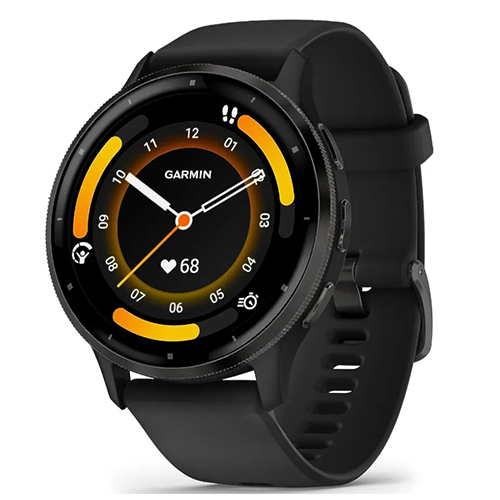
Best overall
Most Garmin watches aren't that "smart" compared to bigger brands. The Venu 3 closes the gap with a mic and speaker for calls and voice assistants, plus smarter notifications.

Best affordable
Swooping in at just $50 more than the older Forerunner 55, the Forerunner 165 offers fantastic features and the perk of an AMOLED display.

Best premium
The Forerunner 970 gives you the same tricks as a Fenix or Enduro, such as offline maps, running tolerance, and Strava Live Segments, only for hundreds less.
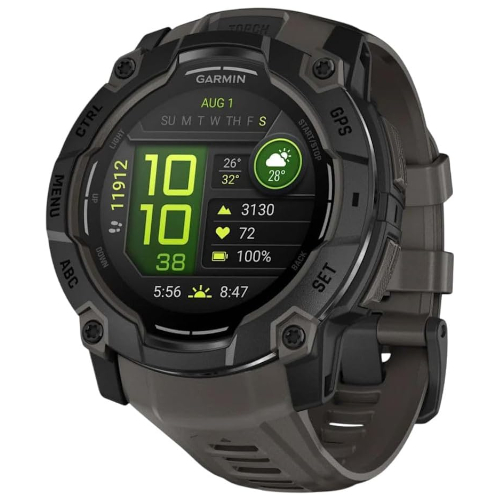
Best battery
The Instinct 3 Solar stretches battery life to weeks, if not months, of use, but you may prefer the AMOLED version for better readability. Both have rugged perks and in-depth training insights.

Best mid-range
The Vivoactive 6 is Garmin's rare watch to fall into the "normal" price range for a fitness watch, and it's a great entry point for new Garmin users, with the mainstream tools you need to get fitter.
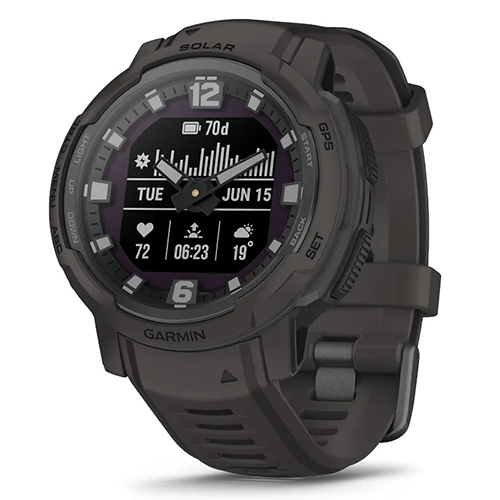
Best hybrid
Get the same ruggedness and month-long battery life of an Instinct watch, but with a stylish hybrid look, an optional Solar option, and plenty of useful training tools.
Load the next 3 products ↓
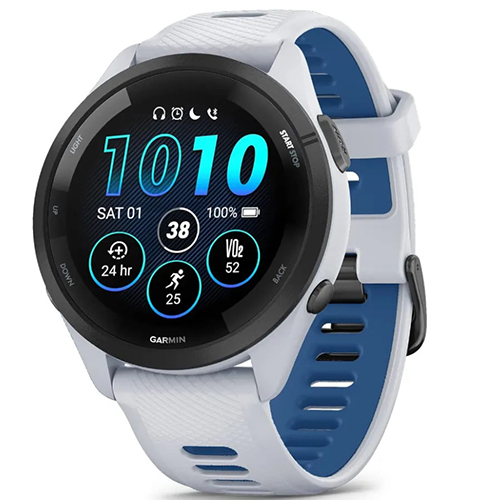
Best for runners
Thanks to its AMOLED upgrade, dual-frequency GPS tracking, long battery life, and training readiness software, the Forerunner 265 is a solid option that fits firmly between the 165 and 970.
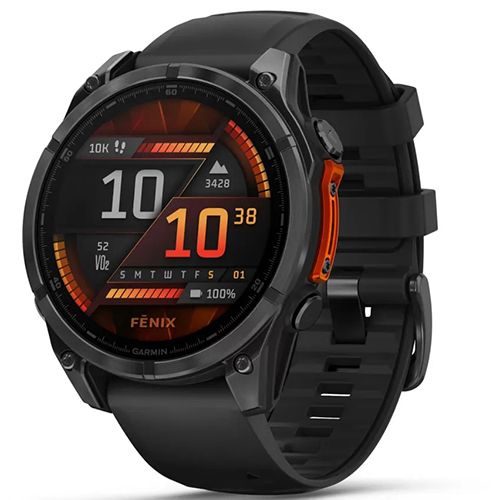
Best for big spenders
If money is no object, the Fenix 8 has features like strength training and dynamic routing, plus an LED flashlight and excellent battery life, paired with an AMOLED display.

Best for kids
Adults aren't the only ones that should establish good fitness habits. The Bounce encourages kids to engage in physical activity while giving parents a way to contact them without needing a cell phone.
Best overall
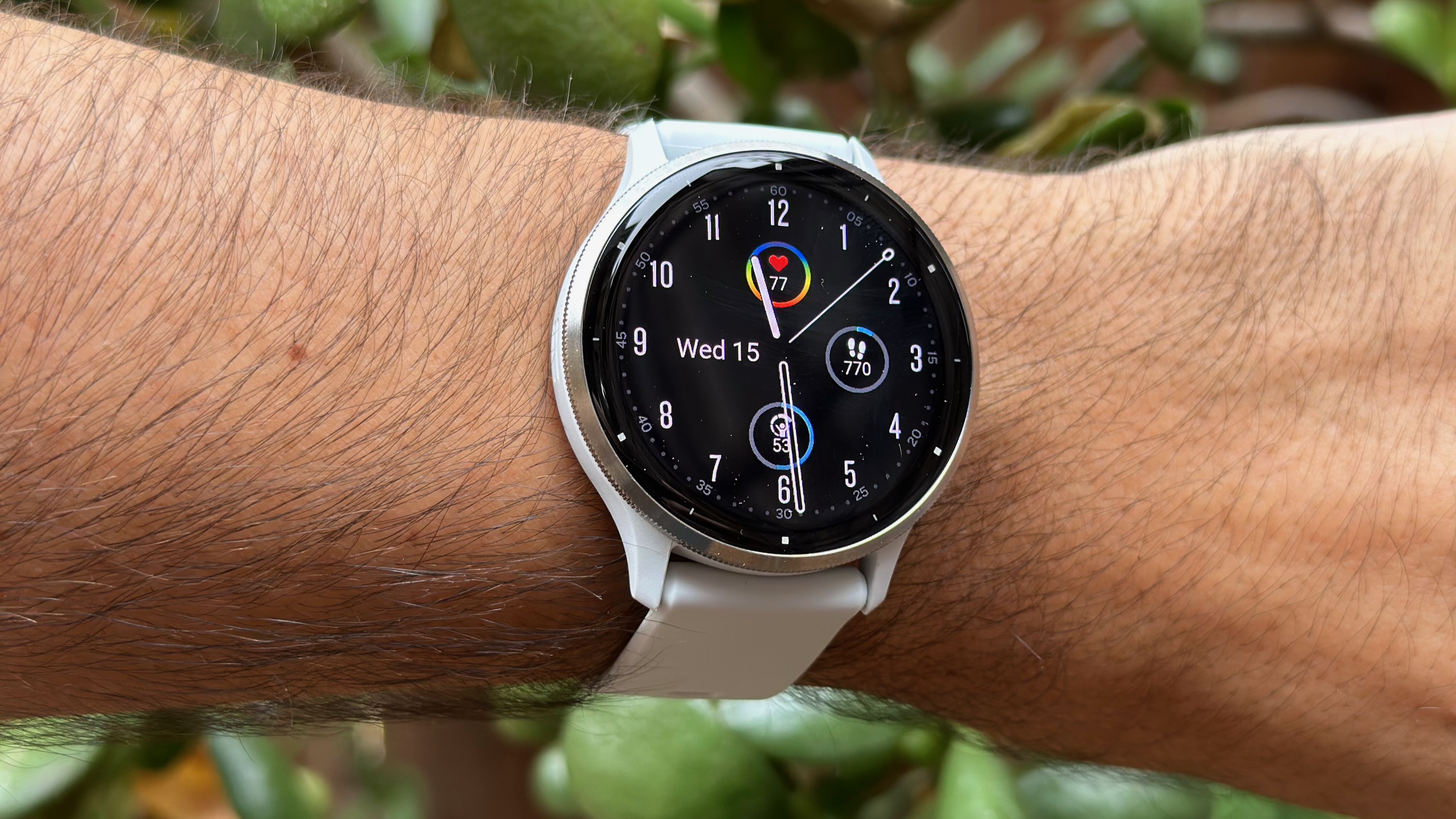
Specifications
Reasons to buy
Reasons to avoid
Garmin watches may never be known for their "smarts" or health insights compared to a Wear OS watch or a Fitbit with Google apps. But the Garmin Venu 3 earns its "best Garmin watch" title by bridging that gap, with a streamlined Garmin OS, new ECG and skin temperature sensors, and the usual training smarts other brands can't offer.
More svelte than your typical Garmin watch with a thin, stainless steel bezel, the Venu 3 has 1.2- and 1.4-inch AMOLED touchscreen options to fit any wrist size, as well as a built-in mic and speaker for passthrough voice commands to your phone or Bluetooth calling.
In my Garmin Venu 3 review, I praised its more accessible UI, the revamped Sleep Coach for better nightly insights, and the enhanced Body Battery graph that shows exactly when you used or regained energy with a workout, nap, or meditation.
For gym goers, it has thousands of animated exercises with muscle maps showing the impact of each move. For runners, it uses multiple GNSSs to pinpoint your location during runs, then suggests how many hours or days to recover before your next run and what kind of "workout effect" it had on your fitness. But it's somewhat limited for key features like training load and daily suggested workouts.
The Venu 4 is likely to claim this spot soon, given it beats the Venu 3 with new coaching insights, better GPS accuracy, new on-watch voice commands, and the Forerunner training tools that the 3 lacked. But we're still in the midst of reviewing it, and the Venu 3 is a more affordable entry point that I can personally recommend. Stay tuned!
Attribute | Quick look | Score |
|---|---|---|
Display | 2 AMOLED sizes, high-res, only GG3 and 1,000 nits | ★★★☆☆ |
Design | Stylish steel bezel, three buttons (shortcuts but no Up/Down), 5ATM, fairly light; includes mic/speaker | ★★★★☆ |
Battery life | 14 days, 26 GPS hours is strong but standard for Garmin | ★★★★☆ |
Health | Accurate HR, HRV, Sleep Coach with skin temp and nap detection, continuous SpO2, ECG | ★★★★★ |
Fitness | Garmin Coach, basic training effect & recovery, animated workouts, but limited running/biking compared to Forerunners | ★★★☆☆ |
GPS accuracy | All-systems GNSS does very well, if not multi-band quality | ★★★★☆ |
Price | As Garmin watches rise in price, the Venu 3 remains relatively affordable for what it offers | ★★★★☆ |
Best affordable
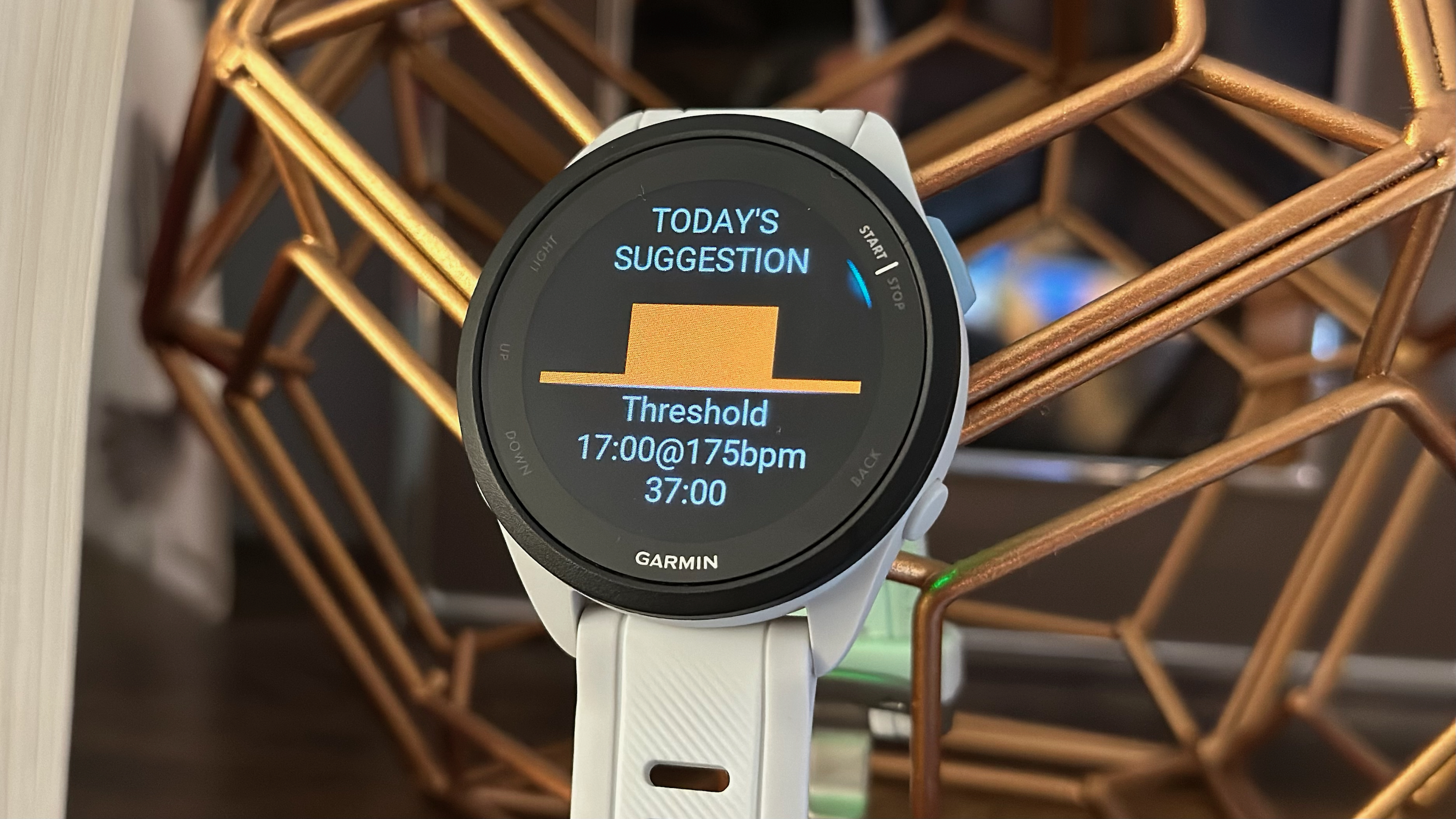
Specifications
Reasons to buy
Reasons to avoid
Only a few Garmin watches are truly "affordable," several of which are too old to recommend anymore (like the Forerunner 55). The Forerunner 165, on the other hand, is a great entry point to the brand, particularly for runners or cyclists, and much more well-rounded than past "cheap" Garmins.
The Forerunner 165 beats the 55 with a more accurate HR sensor with HRV data for better Body Battery accuracy, blood oxygen data, all-systems GNSS like the Venu 3's, a compass for breadcrumb navigation, an altimeter for elevation data, and post-run Training Effect data. Plus, of course, you switch from a dim MIP display to an AMOLED touchscreen, while keeping the same thin, lightweight design.
Getting all this, plus Forerunner essentials like Garmin Coach, recovery time estimates, daily suggested workouts, and VO2 Max, is an insane value for this price range. And when we tested its HR and GPS accuracy against other cheap brands, the Forerunner 165 either beat or matched comparable COROS and Fitbit devices.
Other Forerunners, like our next pick, are objectively better for "serious" outdoor athletes. Garmin stripped away training load, training load focus, training readiness, Performance Condition, multisport activities, and other key software tools to make pricier models more compelling.
You'll have to pay hundreds more for an unrestricted experience, but y Garmin Forerunner 165 review explains why you shouldn't "upsell yourself." The watch still tracks your training load and recommends workouts or rest based on that data; you just can't see it. The Forerunner 165 keeps things simpler, and anyone who relies on something like TrainingPeaks for workout plans can probably make do without the extras.
Attribute | Quick look | Score |
|---|---|---|
Display | 1 small AMOLED option w/ decent bezel and "chemically strengthened" glass | ★★★☆☆ |
Design | Very lightweight and thin, 5 buttons, 5ATM, plastic design | ★★★☆☆ |
Battery life | 11 days, 19 GPS hours is good but lower end for Garmin | ★★★☆☆ |
Health | Accurate HR, HRV, sleep tracking, and SpO2, but no ECG or skin temp | ★★★☆☆ |
Fitness | Daily suggested workouts, race-adaptive training, training effect, but no training load/readiness | ★★★☆☆ |
GPS accuracy | All-systems GNSS did very well in tests | ★★★★☆ |
Price | $249 price is excellent for Garmin | ★★★★★ |
Best premium
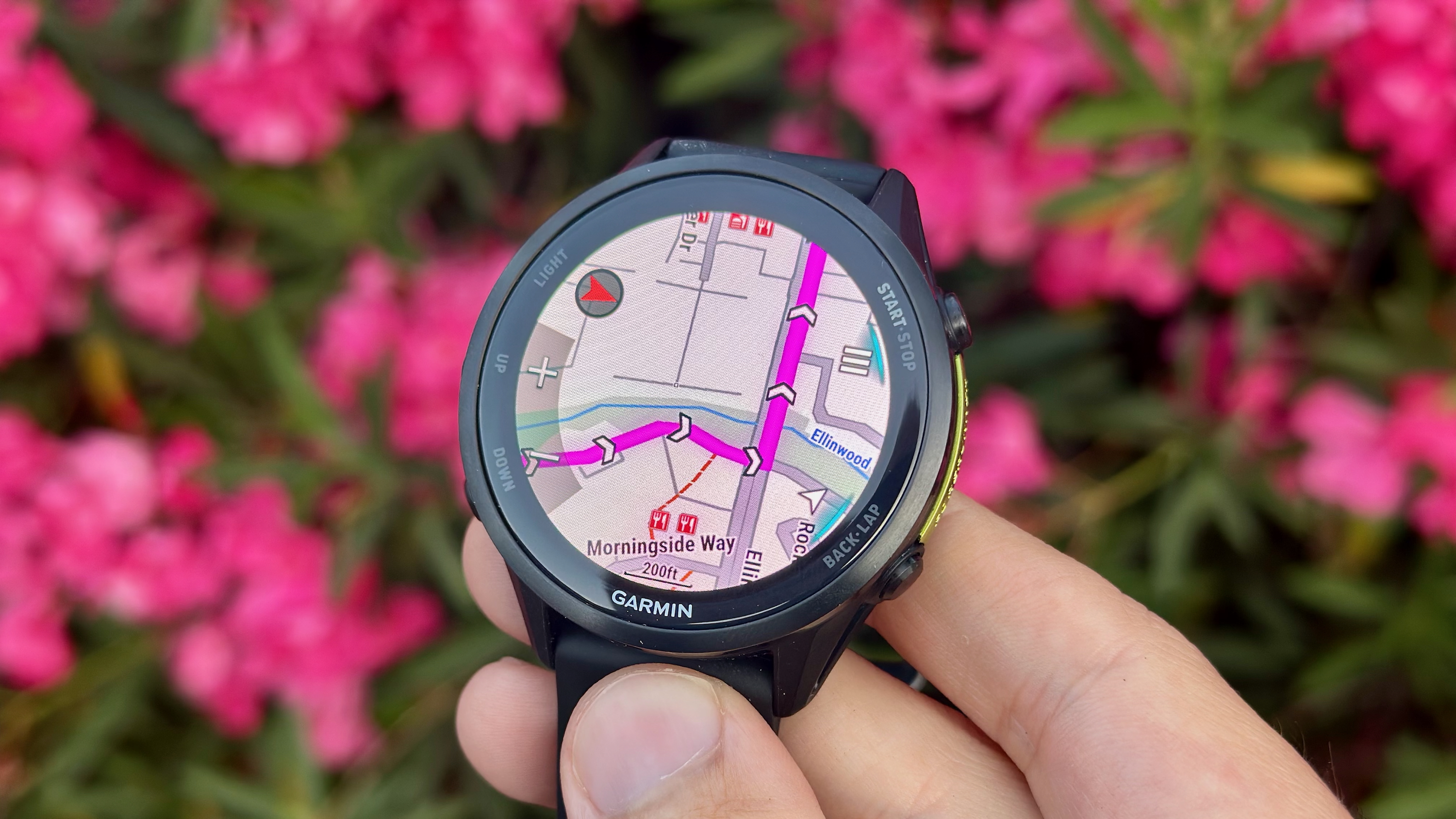
Specifications
Reasons to buy
Reasons to avoid
Garmin prices keep rising, and past Fenix buyers might reasonably balk at spending $1,200 on the Fenix 8. If you're willing to spend a lot for quality features, but without overspending on things you don't need, I recommend the Garmin Forerunner 970 above the rest.
My previous pick for this slot, the Garmin Forerunner 965, is still available and easy to recommend, with nearly all the same high-end training load guidance, daily suggested workouts, and fantastic battery life for $150 less. The Forerunner 970 simply modernized the 965, adding a mic & speaker for calls and commands, an LED flashlight for navigation at night, ECG and skin temperature readings, and doubled AMOLED brightness to make it more readable outdoors.
My Garmin Forerunner 970 review praised how much more comfortable this watch is than my Fenix 8 for long runs, because it prioritizes lightweight polymers instead of stylish metal. It loses a week of battery compared to the 965 because of its brighter display, but you can manually dim the brightness back to the old 1,000-nit standard to stretch out its lifespan if you prefer.
In particular, I loved the Forerunner 970's running tolerance metric. Garmin watches focus on cardiovascular load and recovery; the 970 finally expanded to focus on biomechanical load on your muscles and joints, judging how much your body can handle per week and whether certain activities will impact your recovery more than others. It's vital context, especially when training for longer races.
The Forerunner 970 isn't the strongest smartwatch, with occasional laggy maps and buggy voice commands; I'm hoping this is an area where Garmin can improve eventually. But since the Fenix 8 and other $1,000+ models share this trait, it feels easier to stomach this on the cheaper 970.
Attribute | Quick look | Score |
|---|---|---|
Display | 1 large, thin-bordered, bright AMOLED with Sapphire glass; no small option | ★★★★★ |
Design | Stylish titanium bezel, five buttons, 5ATM, lighter than Fenixes, polymer case | ★★★★☆ |
Battery life | 15 days / 21 multi-band GPS hours beats other recent Garmins with brighter display, but other pricey Garmins / 965 do better | ★★★☆☆ |
Health | The latest Elevate v5 sensors, SpO2, ECG, and skin temperature | ★★★★★ |
Fitness | Huge array of training load ratio / stamina data, topo maps, multisport, endurance/ hill scores; Fenix 8 only has a couple of exclusives | ★★★★★ |
GPS accuracy | High-end multi-band GPS and SatIQ mode | ★★★★★ |
Price | $750 makes it more affordable than Fenixes but too expensive compared to other Forerunners | ★★☆☆☆ |
Best battery
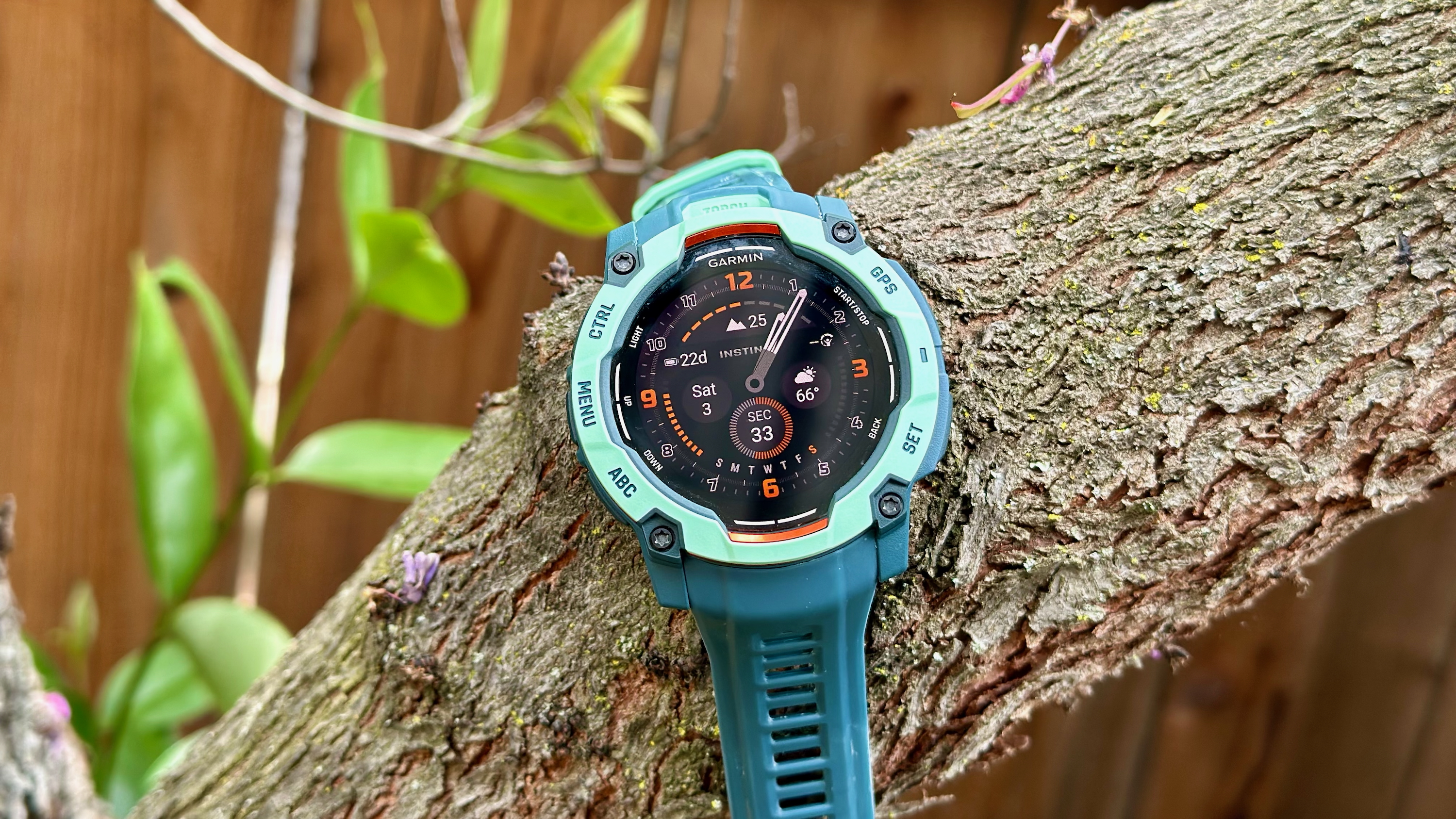
Specifications
Reasons to buy
Reasons to avoid
As Garmin prioritizes brighter AMOLED displays in new models, we've seen battery life stagnate for the brand, sticking around 10–15 days. That's still excellent, but regular GPS workouts cut into that total, and for long backpacking excursions or all-day races, you might need a battery buffer.
The Garmin Instinct 3 and Enduro 3 are your two best bets, but given the latter costs twice as much, I'll recommend the model I've reviewed for myself. Specifically, I tested the Instinct 3 AMOLED, which lasts for weeks at a time but stretches much longer than my other picks because of an optimized processor and bulky design with room for a larger battery.
You could very well choose the Instinct 3 MIP Solar; I haven't used it, but I did love the Instinct 2X Solar for its absurd longevity, dual-band GPS accuracy, and built-in flashlight. The newer model takes that same template and adds Power Glass that's even more efficient at converting sunlight into smartwatch juice, helping the Instinct 3 50mm go from 34 to 60 multi-band GPS hours with solar, where the 2X Solar could only add nine hours (27 to 36).
Since I personally don't need 40–60 days of battery, I prefer the AMOLED compromise. It's so much more readable for notifications and widgets, with no "window" taking up space in the corner. I only wish Garmin had given the AMOLED model maps, but I suspect its optimized processor couldn't handle them; you'll need the Enduro 3 for them.
Whichever display you choose, you're getting all the vital training load tools and daily workout suggestions you'd see on a Forerunner. Its bulky look will appeal to G-Shock or Casio fans, while others won't appreciate the lack of touchscreen.
Attribute | Quick look | Score |
|---|---|---|
Display | Two AMOLED or MIP size options. AMOLED is more readable but not too bright; two-window MIP will only appeal to old Garmin fans | ★★★★☆ |
Design | Military-grade rugged, 5 buttons, 10ATM, will appeal to old-school watch fans but too bulky for others | ★★★★☆ |
Battery life | Can have "unlimited" lifespan if you get enough sunlight, while AMOLED model still lasts for weeks | ★★★★★ |
Health | Like other Elevate v4 watches, delivers good HR and stress accuracy but short on ECG/temp, Sleep Coaching | ★★★☆☆ |
Fitness | Similar training load / readiness/ coaching to Forerunners, though the missing topographical maps is frustrating | ★★★☆☆ |
GPS accuracy | Excellent multi-band GPS accuracy, or SatIQ mode | ★★★★★ |
Price | Slightly higher cost for AMOLED, still much more affordable than Enduro | ★★★☆☆ |
Best mid-range
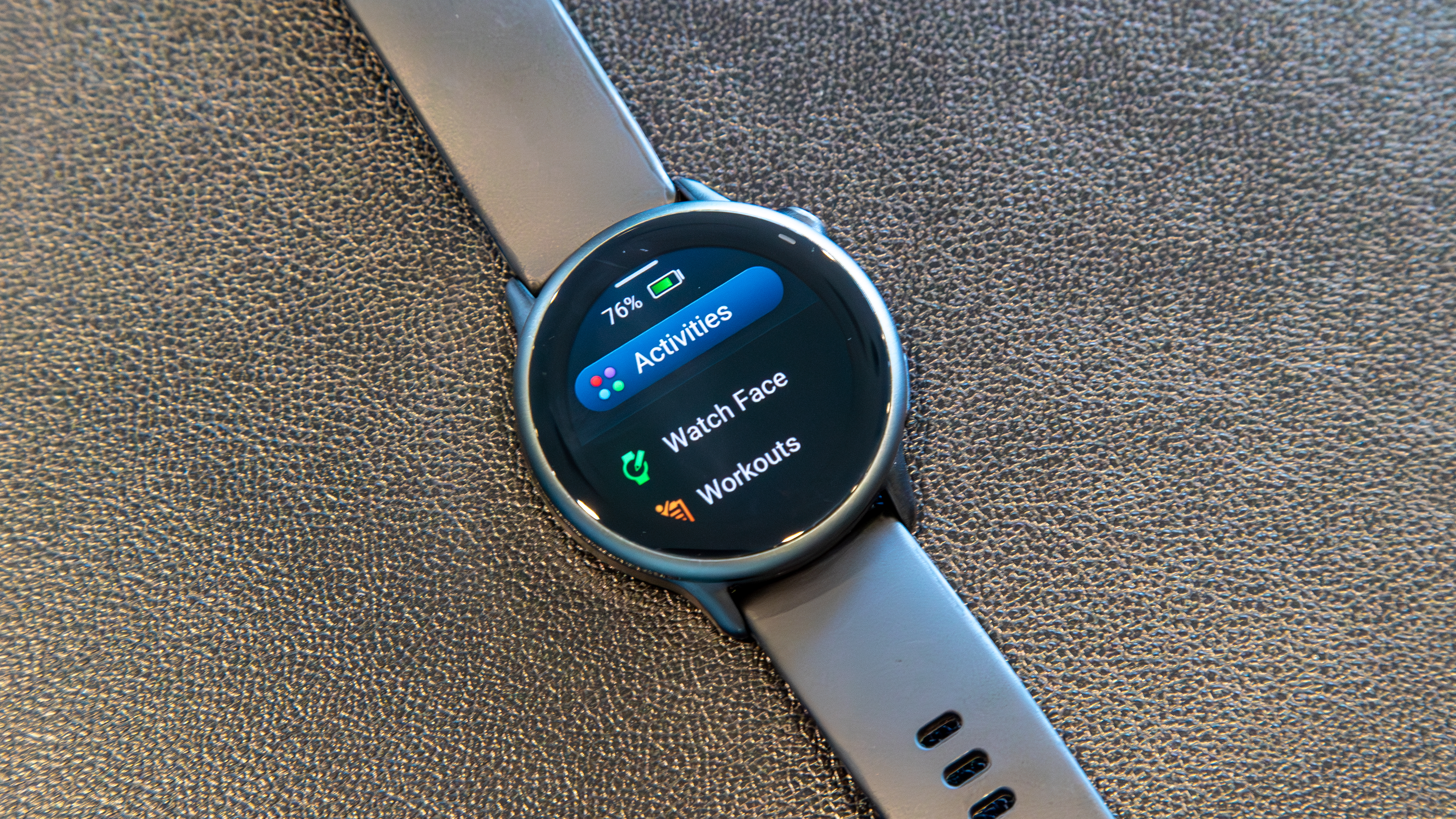
Specifications
Reasons to buy
Reasons to avoid
I'm always looking to introduce people to Garmin watches with models that won't overwhelm them with niche features or scare them off with high prices. I used to recommend the Venu Sq 2 for this mid-range, entry-level slot, but it's aged out of relevance and dealt with annoying bugs, making the Vivoactive 6 a much easier recommendation.
I haven't used it myself, but my colleague Derrek reviewed the Vivoactive 6 and praised it as the "perfect entryway into the world of Garmin watches," with a "more user-friendly UI" than past models he tested and a lightweight design that he appreciated.
He and I agree that the Vivoactive 6 is a Venu-lite experience, if you're interested in training essentials but don't need the Venu 3's mic, speaker, or newer health sensors, or a Forerunner's training load data or elevation tracking.
As for what you do get, the Vivoactive 6 offers Body Battery and sleep coaching, downloadable workouts with exercise animations and muscle maps, personalized Garmin Run or Strength Coach plans, dozens of sports modes, and a post-workout summary of how long to recovery and what the benefit was to your fitness.
I personally prefer a more in-depth Garmin experience, but not everyone will need the full suite of features. The Vivoactive 6 gives you enough to motivate you, without extra distractions, and with a size small enough to be comfortable for sleep tracking.
Attribute | Quick look | Score |
|---|---|---|
Display | 1.2-inch AMOLED, only comes in one size | ★★★☆☆ |
Design | Touchscreen dependent, rounded aluminum casing with multiple distinct colors, comfortably light | ★★★☆☆ |
Battery life | 11 days, 21 GPS hours is only about average for Garmin, though still respectable | ★★★☆☆ |
Health | HR, HRV, sleep coaching, Body Battery, but no newer sensors despite launching in 2025 | ★★★☆☆ |
Fitness | Unique daily walking suggestions, great indoor workouts and essential running guidance, no training load or status but at least recovery time recs | ★★★☆☆ |
GPS accuracy | All-systems GNSS does very well, but no multi-band | ★★★★☆ |
Price | Very accessible price for what it offers, compared to other Garmins | ★★★★★ |
Best hybrid
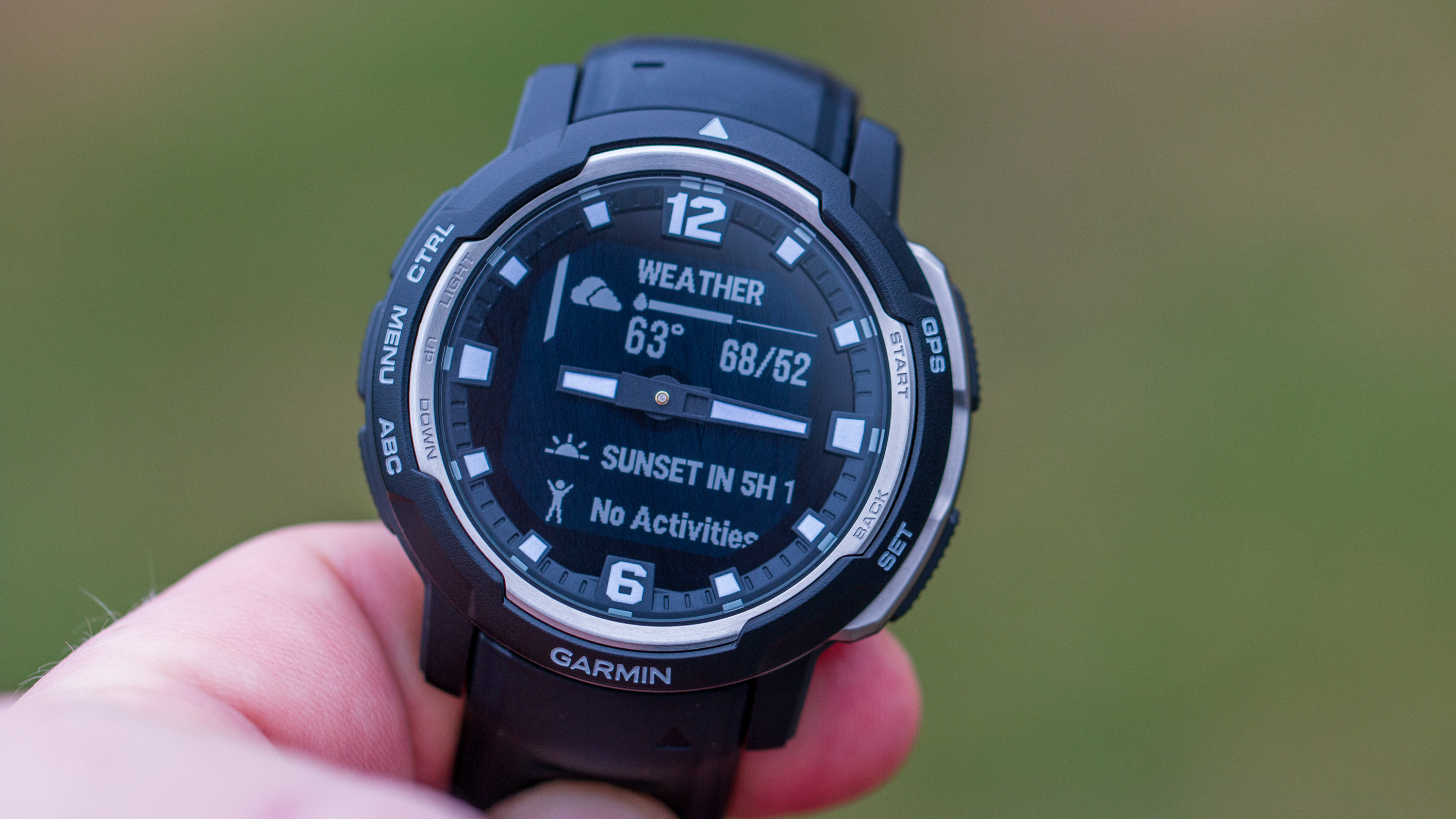
Specifications
Reasons to buy
Reasons to avoid
Garmin has a few hybrid smartwatches, with the Vivomove series designed for fashion-forward athletes who value style above smarts. But as much as we like the vívomove Sport and vívomove Trend, they're painfully limited in features and battery to prioritize a sleek look. We think more potential Garmin fans will lean towards the rugged Instinct Crossover instead.
Our Instinct Crossover reviewer, Andrew Myrick, cited his "nostalgia" for his Casio G-Shock that made this rugged hybrid so appealing. It combines polymer and steel in the bezel; that and the analog hands give it a more striking look than the Instinct 2X, even if the Crossover otherwise mirrors it in display size, look, and weight.
The hands auto-shift to the 3 and 9 positions when you get a notification or you navigate menus with the Up/Down buttons, so they're not going to distract you too much. They do take up space, but I still think you'll prefer this display to the low-resolution Instinct 3 MIP display, or to other Garmin hybrids with tiny LCD cutouts.
But they do take up space on an already pixel-limited display, so you have to take that into account. The visibility is still much better than on Garmin's other hybrids, where the LCD space is a tiny circular cut-out instead of the full watch face. You can even buy the Instinct Crossover AMOLED to combine physical hands with a higher-res display, though it's more expensive and shorter-lived.
The standard Garmin Instinct Crossover will last a month on its own merits, or longer with the solar-powered version. That's the main appeal here, along with Garmin's typical training insights. But the 14-day AMOLED model may appeal more if readability is more important than longevity.
Attribute | Quick look | Score |
|---|---|---|
Display | 0.9-inch low-res MIP, hands can block some data, but readable in sunlight; you may prefer the 1.2-inch AMOLED option | ★★★☆☆ |
Design | 10ATM with military-grade certification and five buttons; hybrid look is striking, watch itself isn't too heavy | ★★★★★ |
Battery life | 14 days with AMOLED, 28 with MIP, or over two months with Solar | ★★★★★ |
Health | HR, stress, sleep, and other standards, but no ECG/ skin temp, sleep coaching, relax reminders, etc. | ★★★☆☆ |
Fitness | Includes training load / readiness, workout suggestions, and recovery time | ★★★★☆ |
GPS accuracy | Multi-GNSS included but only one at a time | ★★☆☆☆ |
Price | $399–$449 is on par with most other picks; $649 AMOLED version feels more overpriced | ★★★☆☆ |
Best for runners
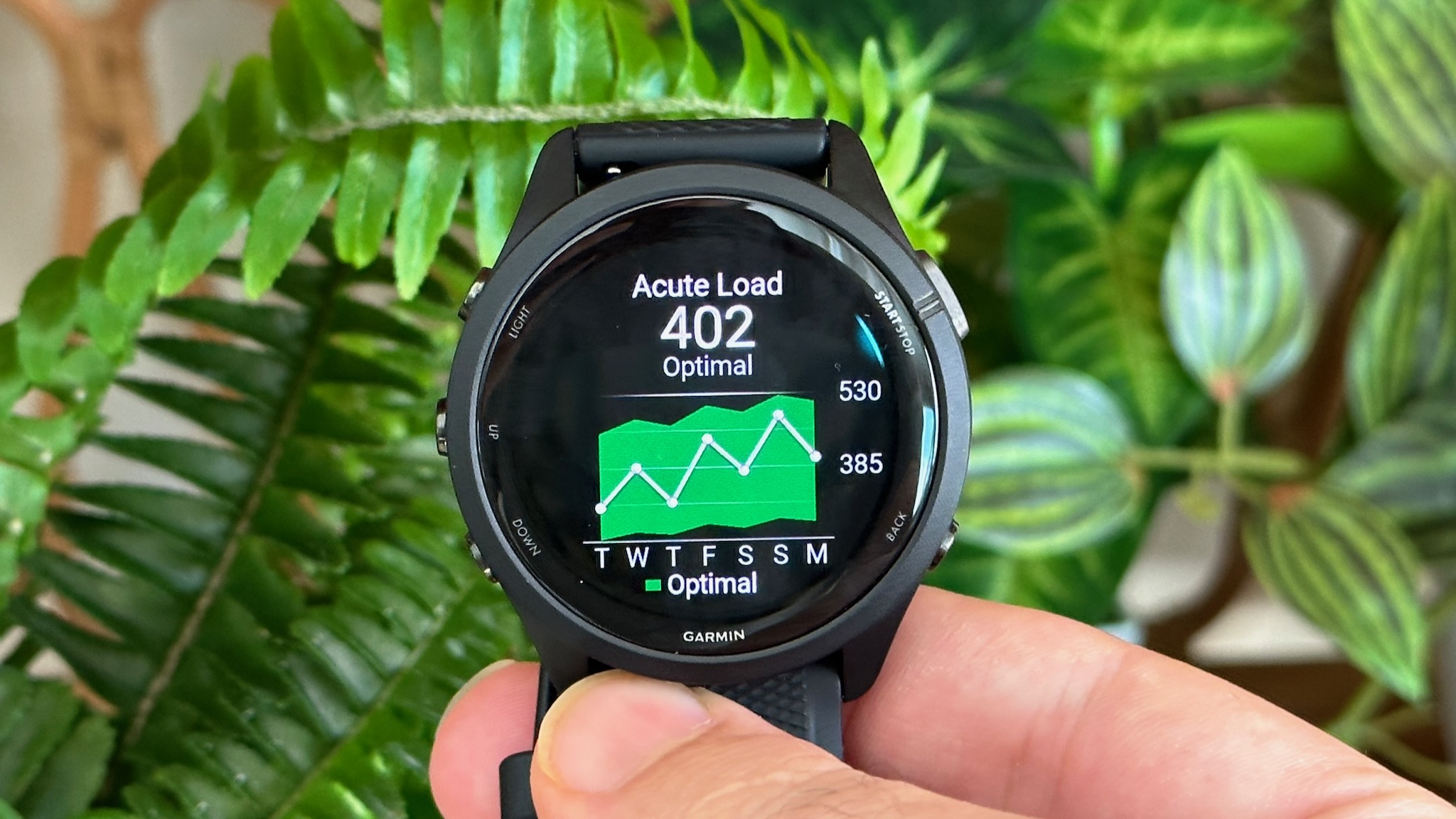
Specifications
Reasons to buy
Reasons to avoid
The Garmin Forerunner 265 topped this guide, along with my best running watch guide, for a long time. It hit the right balance between features and affordability, with the running form analysis, HRV stress to judge Training Readiness, and post-run Training Effect and Training Load Focus to guide you toward faster PRs or better VO2 Max.
Nowadays, you could easily recommend the Forerunner 570 instead.
today because of its affordability next to the 965. Even though I still think it's a great watch, I decided to dethrone it in favor of the Venu 3, now that the Forerunner 165 offers so many of the same perks and makes the 265 feel a bit overpriced.
You get everything from running form analysis and heart rate variability (HRV) stress data to training load focus and dual-band GPS for the same accuracy and guidance as the Forerunner 965 (barring a few exceptions). With pre-run Training Readiness and post-run Training Effect on VO2 Max, you'll learn a lot about your running abilities and fitness level over time.
As my Garmin Forerunner 265 review explains, this watch is essentially a Forerunner 255 Music with a better display and the Training Readiness metric added. If you don't need the AMOLED upgrade, the 255 will still give you dual-band GPS, training load (focus), daily run suggestions, and other perks for less. Pay even less and opt for the Forerunner 165, a great running watch too, just with fewer data points in the Connect app. If you can find the Garmin Forerunner 265 on sale, it's still a worthwhile option to consider.
Attribute | Quick look | Score |
|---|---|---|
Display | 2 AMOLED size options, GG3, thicker border makes them slightly smaller than 965/ Venu 3 | ★★★☆☆ |
Design | Polymer only, 5 buttons, 5ATM, comfortable weight (esp. 265S) but fairly generic looking | ★★★☆☆ |
Battery life | 13–15 days or 20–24 GPS hours (better on 265S) is good but lower than we'd like at this price point | ★★★☆☆ |
Health | Elevate v4 quality for HR data, Sleep Coaching, and SpO2, but no ECG or skin temp | ★★★☆☆ |
Fitness | Most of the 965's training load features, only without real-time stamina, endurance/ hill scores | ★★★★☆ |
GPS accuracy | Multi-band GPS and SatIQ mode combine for high-end accuracy on par with 965 | ★★★★★ |
Price | $449 on par with other high-end Venus and Instincts | ★★★☆☆ |
Best for big spenders
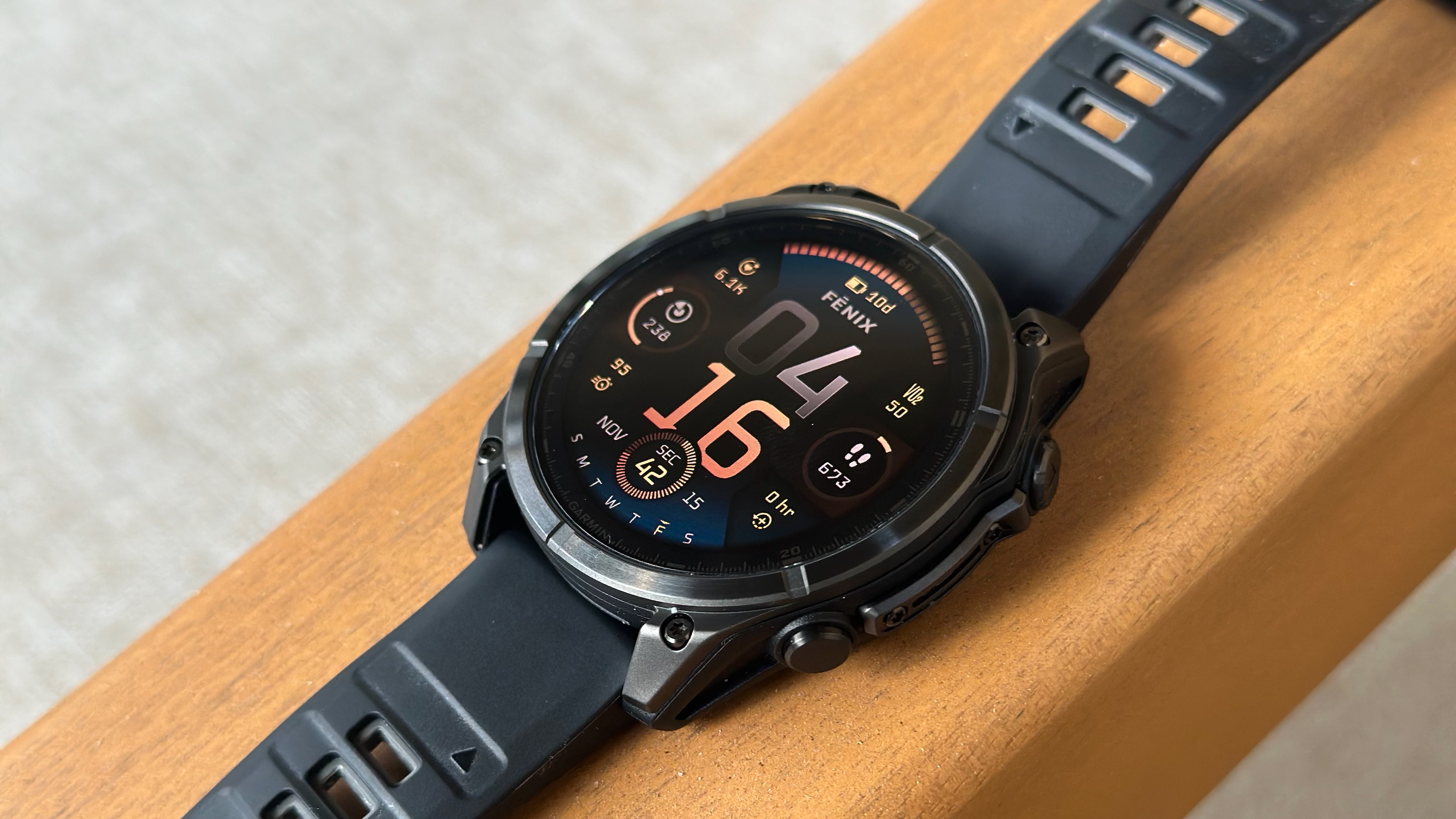
Specifications
Reasons to buy
Reasons to avoid
While I recommended the Forerunner 970 above as a good alternative, the Garmin Fenix 8 is still the Garmin flagship. It fantastic battery life, its full titanium case gives it a level of style that most polymer Garmins lack, and you get every current and future Garmin feature across the next couple of years.
In my Garmin Fenix 8, I called it a Frankenstein watch because all of its perks can be found in other top models — just not all in one device. You get the longevity and military-grade ruggedness of an Instinct, the training tools and coaching of a Forerunner, and the health sensors and mic/ speaker of a Venu. You're buying the Fenix because you want everything.
The downside to this is that the Fenix 8 isn't necessarily better than its cheaper counterparts. Its HR and GPS accuracy are excellent, but you'll get identical results on a Forerunner 970. The AMOLED resolution is the same, and 2025 models actually hit a higher brightness. You can get better maps on a Venu X1, or the same mic/ speaker quality on the Venu 4.
I still absolutely think the Fenix 8 belongs on this list, with enough battery to last a month with AMOLED or months with the MIP models. It's one of the few models with diveproofing, and you get niche features like ski dynamics, MTB dynamics, and surfing. If you have the kind of active lifestyle where you're trying every sport, or your favorite is ignored on cheaper models, then the Fenix 8 is the best fit.
You may also want to look into the Fenix 8 Pro, which adds LTE and satellite connectivity (plus a brighter AMOLED) for $100 extra.
Attribute | Quick look | Score |
|---|---|---|
Display | Three size options, can choose AMOLED or MIP based on priorities, up to sapphire glass protection | ★★★★★ |
Design | Choose the titanium models for best weight; 10ATM resistance and dive certification; striking look across board; has mic/ speaker | ★★★★★ |
Battery life | AMOLED models are stronger than other picks, especially for dual-band GPS, and MIP models rival Instinct solar watches with much better displays | ★★★★★ |
Health | Elevate v5 sensor for slight heart rate accuracy boost, ECG, and skin temp, plus Sleep Coach. Same as Venu 3 | ★★★★★ |
Fitness | Everything the Forerunner 965 offers, plus strength coaching, better map routing, and more niche sporting tools (ski maps, surfing/tides, etc.) | ★★★★★ |
GPS accuracy | Matches other dual-band GPS watches on this list for accuracy | ★★★★★ |
Price | $999–$1,299 prices all Fenix 8 (Pro) models outside the budget of everyday people | ★☆☆☆☆ |
Best for kids

Specifications
Reasons to buy
Reasons to avoid
Garmin watch designs can be too large for many adults' wrists, let alone children's little arms. Most of the features are too advanced anyway and not designed to track things like kids' playtime. Garmin watches just aren't that fun-looking either. But the Garmin Bounce is the exception to the rule as the best kids' smartwatch geared specifically towards fitness.
For starters, the Garmin Bounce boasts 5ATM water resistance and is "swim-friendly," where other kids' watches can't survive a dip in the pool. It also has two days of battery life and is designed to support sleep tracking, with alarms to help them wake up for school.
The watch comes with educational games and daily challenges rewarding them for completing chores or 60 minutes of activity per day. You set up what chores you want them to complete and what rewards they'll receive for doing so. Our reviewer found that his kid enjoyed trying to beat his workout and sleep scores, and found it comfortable to wear while sleeping.
The Garmin Bounce has both Wi-Fi and the option for LTE connectivity, configurable through the Garmin Jr. app. Garmin's LTE service is $10 per month and Garmin manages its own network with an LTE coverage map that you can check before buying.
Our Garmin Bounce reviewer praised how both the on-watch UI and phone app are "intuitive," making it easy to figure out messaging or parental controls. The LiveTrack tool is useful for peace of mind, the school mode ensures it isn't a distraction during class, and the mic & speaker were high-quality. He's currently testing the new Bounce 2, but until he confirms its quality, this last-gen model is still worth buying.
Attribute | Quick look | Score |
|---|---|---|
Display | 1.2-inch LCD is good size for kids, if a bit low-res | ★★★☆☆ |
Design | 5ATM, very light at 37g and built to withstand active kids, 2 buttons | ★★★★☆ |
Battery life | 2-day battery is good considering LTE support, but slow charging and still a bit short-lived | ★★☆☆☆ |
Health | No HR tracking, does track sleep and has geolocation for safety tracking | N/A |
Fitness | Tracks steps, run/walk/bike activities with GPS, nothing more advanced needed for kids | ★★★★☆ |
GPS accuracy | GPS/ Galileo is only meant for basic tracking, not serious athletes | ★★★☆☆ |
Price | Affordable at $149, though you'll need to pay monthly for cellular support | ★★★★☆ |
How to choose
Which of the best Garmin watches should you buy?
Why you can trust Android Central
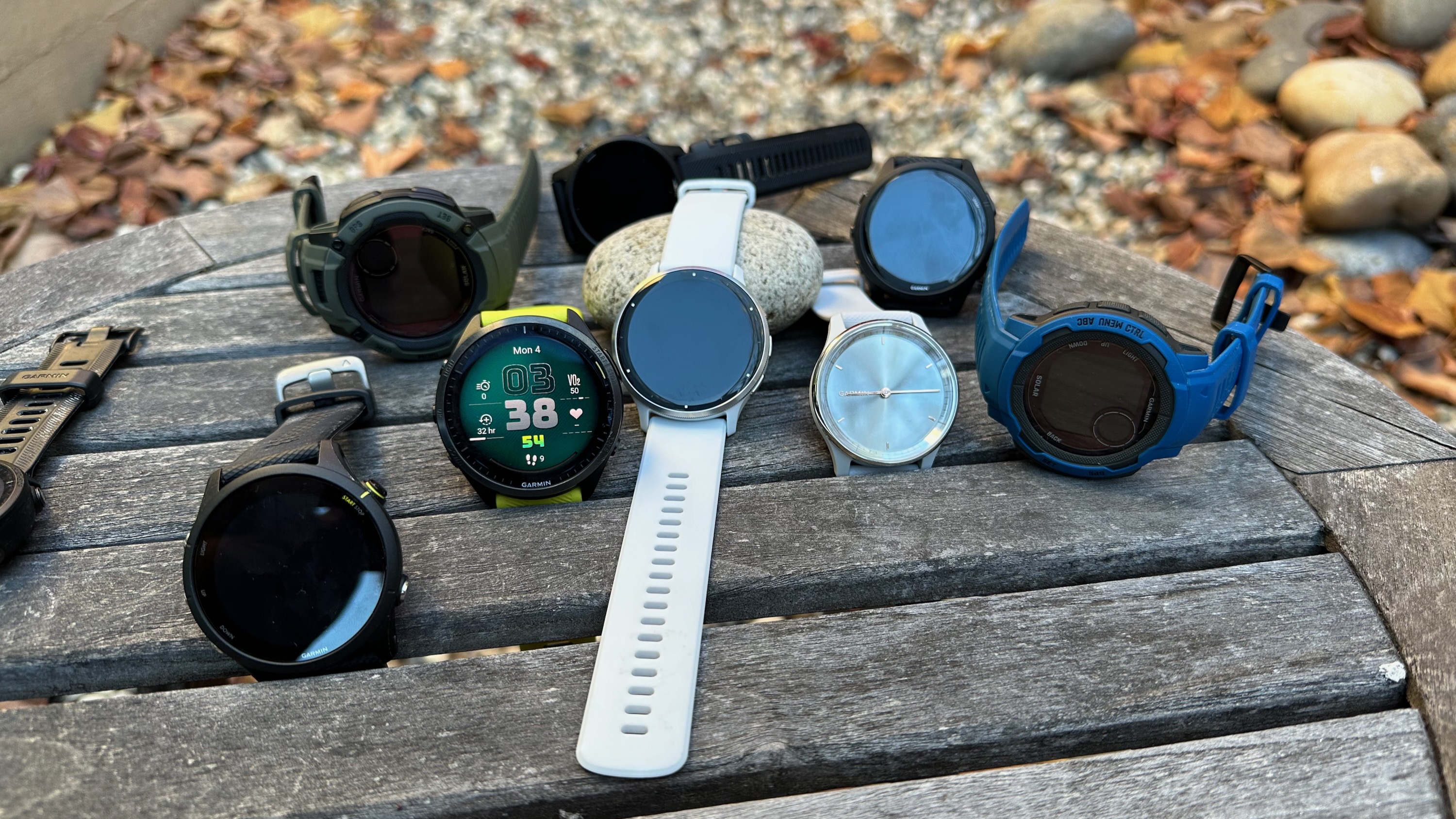
It's challenging to crown only one of these wearables as the best Garmin watch. You can choose an Instinct for battery power, Venu for lifestyle tools, Forerunner for in-depth running and cycling tools, or a Fenix for all of the bells and whistles possible.
Since it's our job to recommend just one, we have to go back to the Garmin Venu 3. It'll ease non-Garmin users into a more limited UI than you're accustomed to with a typical smartwatch. But it's not some basic, mainstream device, either; you're still getting vital insights into improving your fitness and avoiding overtraining when your sleep or Body Battery is off.
Otherwise, if you're looking for something more affordable, the Forerunner 165, Lily 2 Active, or Vivoactive 5 are three options that'll save you money and still give you the Garmin essentials you crave.
If you're looking for more specific advice to help you decide which watch would be the best fit for you, we'll break things down by category:
Best Garmin watch for battery life
Most Garmin watches last at least one week, with two weeks as a baseline if you don't use GPS tracking too often. If you need something built to last for weeks or months, you'll want to look at models with solar panels, or else choose bulkier models with plenty of battery regardless of the sun in your region.
- Garmin Enduro 3 (w/solar): 90 days, Unlimited (Expedition), 320 hours (GPS), 90 hours (multi-band)
- Garmin Fenix 8 51mm Solar: 48 days, 118 days (Expedition), 149 hours (GPS), 65 hours (multi-band)
- Garmin Instinct 2X Solar: 40 days to "unlimited," 60 days to "unlimited" (Expedition), 145 hours (GPS), 36 hours (multi-band GPS)
- Garmin Enduro 2 (w/ solar): 46 days, 172 days (Expedition), 150 hours (GPS), 81 hours (multi-band GPS)
- Garmin Fenix 7X Pro (w/ solar): 37 days, 139 days (Expedition), 122 hours (GPS), 41 hours (multi-band GPS)
- Garmin Instinct 2 Solar: 28 days to "unlimited," 32 days to "unlimited" (Expedition), 48 hours (GPS)
- Garmin Fenix 8 51mm AMOLED: 29 days, 84 hours, 62 hours (multi-band)
- Garmin Forerunner 965: 23 days, 31 hours (GPS), 19 hours (multi-band)
Best Garmin watch for health tracking
Garmin has upgraded its core Elevate sensor a couple of times in the last few years. The newest Elevate v5 sensor added ECG and skin temperature tracking, while the Elevate v4 sensor gave us more accurate heart rate data and HRV information for stress and recovery. Generally speaking, you'll want to buy newer Garmin models with either the v4 or v5 sensor.
The Garmin Venu 3 is the most affordable watch today with the v5 sensor and the latest health tricks and sleep coaching; in the two years since, mostly flagship models like Fenix, Epix, and Enduro have gotten the best sensors, and even the Venu 4 uses the same sensors as before.
Most Garmin watches sold since 2022 have the Elevate v4 sensor, which we've found delivers consistently reliable heart rate data across various Forerunner, Venu, and Instinct models. That includes many 2025 models like the Vivoactive 6 and Instinct 3. You'll have to accept paying extra to get AFib readings and nightly skin temp data.
Best Garmin watch for tracking accuracy
You have three main levels of GPS accuracy on Garmin watches: GPS only, All-Systems GNSS, and multi-band GPS w/ All-Systems. Although all-systems mode is generally accurate on its own merits, multi-band mode is the best for tracking you in difficult conditions like heavy foliage, tall buildings, or nearby mountains that can block satellite signals.
You can check the full list of multi-band Garmin watches, bike computers, handhelds, and so on. Generally speaking, all of the recent Garmin Forerunners above the 255 have multi-band tracking, plus the Instinct 2X or 3, Fenix 7 / 8, Epix Gen 2 series, Venu 4/ X1, and other high-end models like Tactix.
Newer mainline or budget models like the Vivoactive 6 or Forerunner 165 stop at All-Systems mode, but you can count on it being more accurate than your typical GPS-only watch; we've found it does quite well in our testing.
How we test
☑️ 15 years of product testing, including the first smartwatches and fitness bands
☑️ We test HR, GPS, battery life, steps, training plans, and more
☑️ Reviews for every major Garmin watch, as well as competing brands like COROS, Polar, Fitbit, Suunto, Samsung, and Apple
Android Central has reviewed fitness watches and bands since they first became popular, from the Samsung Galaxy Gear in 2013 to the first Fitbit Charge in 2014 and the Pebble Time in 2015. While fitness isn't our site's only focus and we were relatively late to the Garmin party, we've reviewed most new Garmins over the last five years, starting with the Forerunner 745 in 2020.
As the one who reviewed the majority of those watches, as well as competing brands' fitness watches, I have become well-versed in Garmin's feature set and UI. I know what features will be new and exciting to you and focus on testing those in reviews, so you know what to expect.
Across each Garmin watch, I test its heart rate accuracy against an optical arm monitor or chest strap to see whether it can be trusted for accuracy, and check its GPS map against my actual route in track lanes or along trails in tree-lined parks to see how it matches up. I even use a physical pedometer to track step accuracy!
I also wear each Garmin watch day and night, using them regularly for workouts, notifications, and so on, to make sure I catch any random glitches and see how well they do for battery life.
- Smartwatch deals: Best Buy | Walmart | Amazon | Samsung | Dell
- Fitness tracker deals: Best Buy | Walmart | Amazon | Dell
Get the latest news from Android Central, your trusted companion in the world of Android

Michael is Android Central's resident expert on wearables and fitness. Before joining Android Central, he freelanced for years at Techradar, Wareable, Windows Central, and Digital Trends. Channeling his love of running, he established himself as an expert on fitness watches, testing and reviewing models from Garmin, Fitbit, Samsung, Apple, COROS, Polar, Amazfit, Suunto, and more.
- Courtney Lynch
- Christine PersaudContributor
